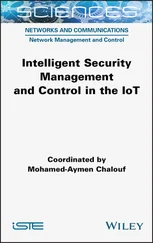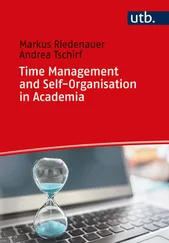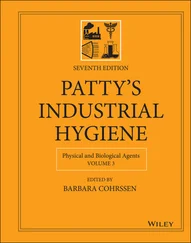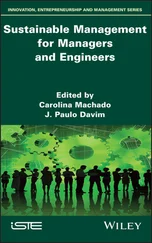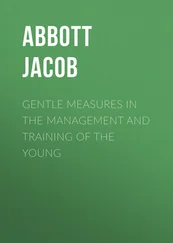The introduction and sale of sensitive chemicals. The production of safety data sheets.
Safety checks carried out with customers.
The management of product liability risks for new products and applications.
The transport of gases.
https://www.the-linde-group.com/en/corporate_responsibility/environment_and_safety/product_stewardship/index.html
3.2.3 Brenntag (Chemical Distributor)
Brenntag takes appropriate measures to ensure the proper handling of our products while they are under the Group's stewardship. This includes procurement, packaging, classification and labeling, handling, storage, and safe transportation, as well as the creation of product dossiers and safety instructions as well as disposal, where necessary.
https://www.brenntag.com/canada/en/safety-and-sustainability/safety/product-stewardship/index.jsp
We consider PS to mean that our products satisfy the highest quality standards and are safe for people, animals, and the environment when properly used. All substances and finished products undergo extensive testing and evaluation in the interest of product safety. We assess possible health and environmental risks along the entire value chain and implement the appropriate measures to mitigate risks based on this.
We strictly observe the legal requirements, and our voluntary commitment and internal standards go beyond these in many areas. This is steered by the Corporate Health, Safety and Sustainability function, which is responsible for implementing the related policies and maintaining the Health, Safety and Environmental (HSE) management systems.
PS is the responsible development, management, and use of technologies, and products across our seeds, traits, and crop protection businesses throughout the entire product life cycle.
https://monsanto.com/products/product-stewardship
Government agencies have varying degrees of involvement in PS activities and also have defined the term in various ways depending on their focus.
Also known as Extended Producer Responsibility (EPR), this approach to recycling creates efficiencies and raises awareness about producing items that do not harm the environment.
There is actually financial incentive for producers to create better designed products that can be disposed of responsibly. Ultimately, this will reduce municipal waste disposal costs as well as the amount of garbage in landfills.
Industry is more responsible to managing the life cycle of designated products and consumer packaging they create and distribute. Your cooperation is needed for the proper collection and recycling of these types of items.
https://www2.gov.bc.ca/gov/content/environment/waste-management/recycling/product-stewardship?keyword=product&keyword=stewardship
We all need to help reduce the impacts of manufactured products on our environment. When a producer, brand owner, importer, retailer, or consumer accepts the responsibility for reducing a product's environmental impact, we call this PS.
PS helps us transition from a linear to a circular economy.
http://www.mfe.govt.nz/waste/product-stewardship/about-product-stewardship
Private advocacy groups and institutions have also defined PS based on their activities and emphasis. One example is given below:
3.2.7.1 Product Stewardship Institute
The Product Stewardship Institute – a consumer advocacy group – defines product stewardship as “the act of minimizing the health, safety, environmental, and social impacts of a product and its packaging throughout all life cycle stages, while also maximizing economic benefits.”
3.2.7.2 Product Stewardship Society
This group was formed in 2013 with a focus on professional development through education, publications, and networking. Their definition is:
Responsibly managing the health, safety, and environmental aspects of products throughout their life cycle and across the value chain in order to prevent or minimize negative impacts and maximize value.
In reviewing the abovementioned examples, common elements become quite clear. Whether defined as a set of principles, a program, a tool, a policy, or a process the focus is a product. The risk management of products throughout their life cycle requires an integrated organizational approach, and close relationships with customers and others involved in the supply chain to make PS happen. Drivers for these activities are regulatory, moral, and ethical in nature.
3.3 Fundamental Program Elements for Product Stewardship
In reviewing the abovementioned definitions, common elements and principles do become clear. PS is about the SHE aspects of products throughout their life cycle . PS requires that a company manage its products from their inception to disposal, commonly referred to as “cradle to grave.” When implemented it is designed to make health, safety, and environmental protection an integral part of the design, manufacture, distribution, use, recycle, and disposal of products. As such PS has clear links to occupational hygiene and overall pollution prevention efforts.
So what are the stages or specific activities in the PS concept? They include the following:
Product Design and Development. This stage includes bench‐top research as well as the markets or uses anticipated for the product being developed. Depending on the region of the activity it can include some elements of compliance. More often it requires sound professional judgment on the possible hazards of a product, developing appropriate handling procedures based on the known and suspected hazards of the products being developed and the development of appropriate hazard communication documents when full information on the product may not be available. This stage also requires consideration of possible use conditions as they relate to potential use and exposure scenarios.
Purchasing. Obtaining services and products, feed stocks, and processing supplies should be considered as an important part of the life cycle of a product and included in PS practices. These practices should include assuring you are doing business with companies with good SHE practices, assuring your service providers are doing business in an environmentally sound matter and obtaining appropriate information on the products you buy.
Manufacturing. This is the stage most familiar to occupational hygienists. It is the activity involved in the product manufacturing and handling facilities. This is the stage of PS with many regulatory requirements that benefit PS. It is the stage where classic industrial hygiene is practiced.
Distribution. Once a product leaves the manufacturing location, the direct ability to control the risks of the product begin to decline. This phase in the product life cycle includes transit, in transit storage, packaging/repackaging, and other distribution activities. There are regulatory requirements for transportation of specific defined hazardous materials that define container specifications and some elements of hazard communication, but for complete PS all products need to be considered commensurate with the hazard and risk.
Marketing. This includes the applications and uses that the company intentionally sells to, marketing literature on applications, and the representations made by the marketing personnel. It is important that marketing literature does not conflict with technical literature and is appropriately descriptive of the hazards and handling needs for a product without becoming a substitute for an material safety data sheet (MSDS).
Читать дальше


